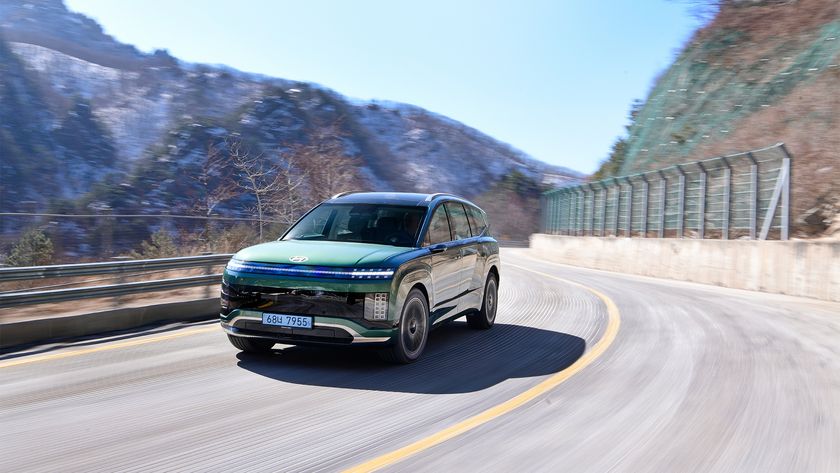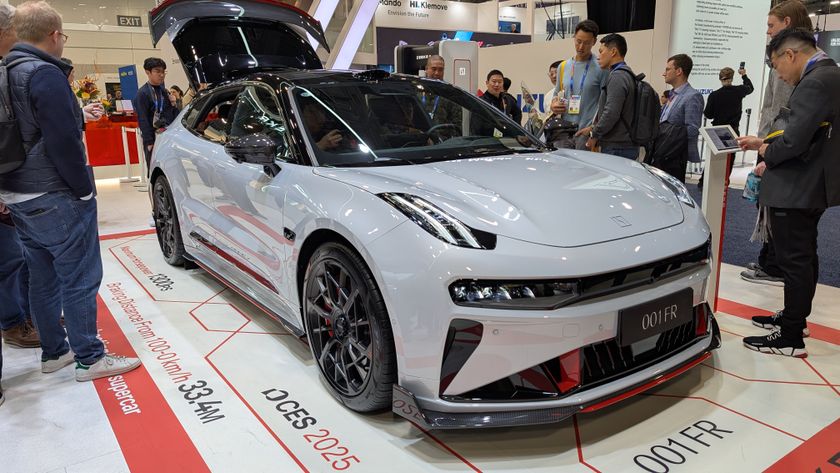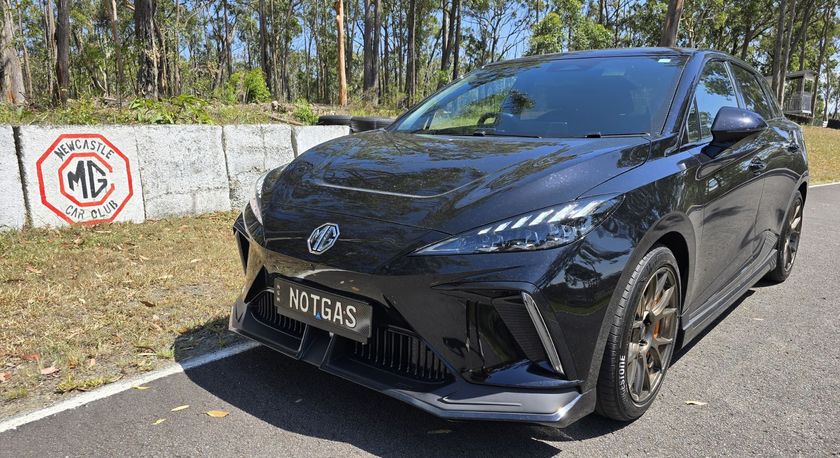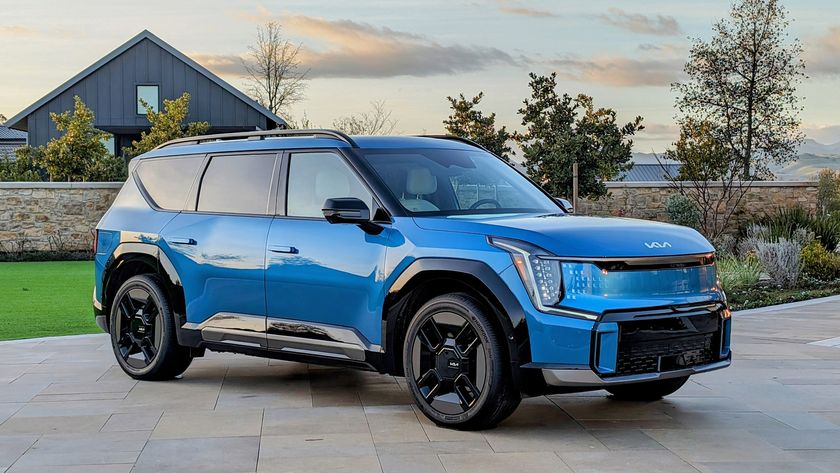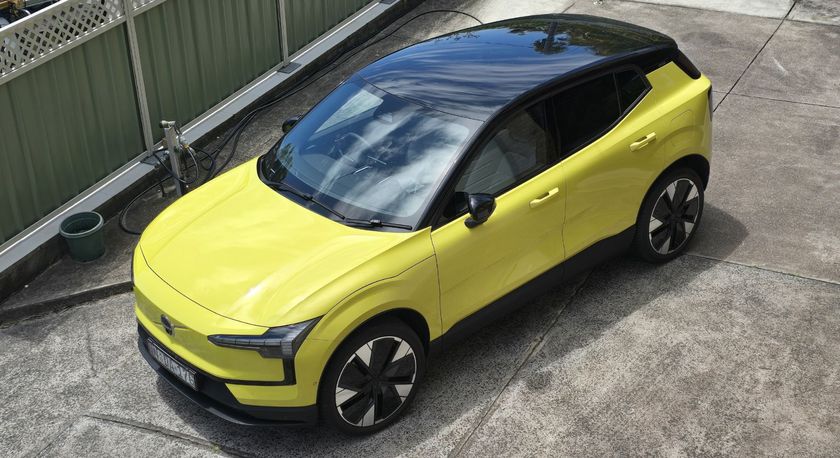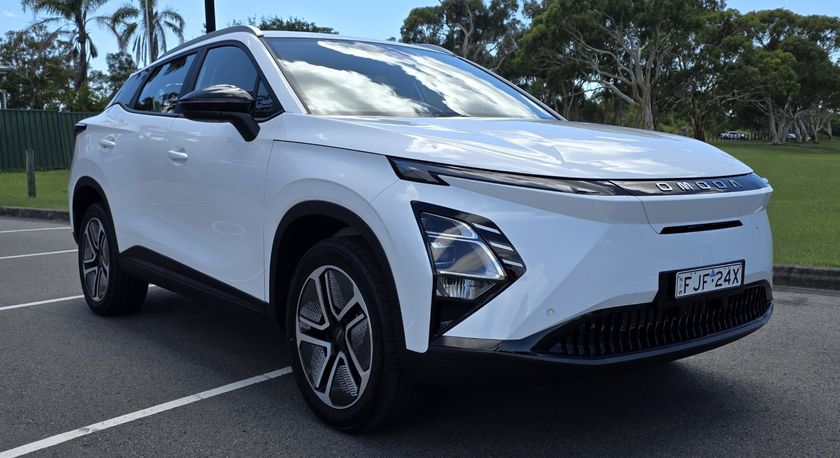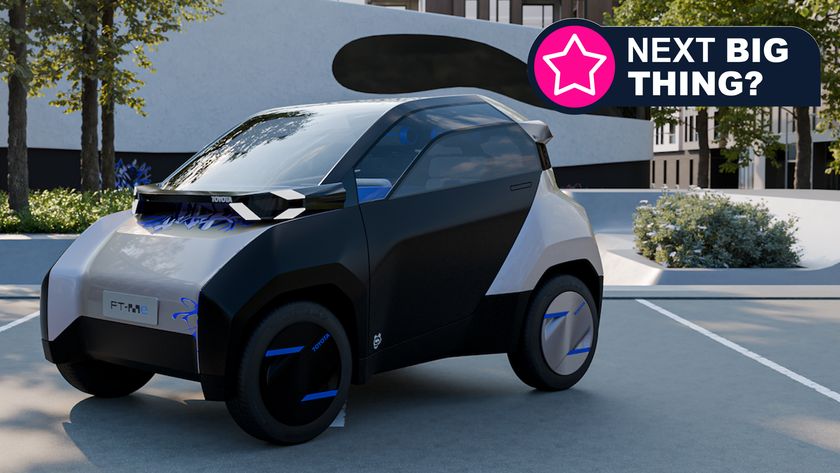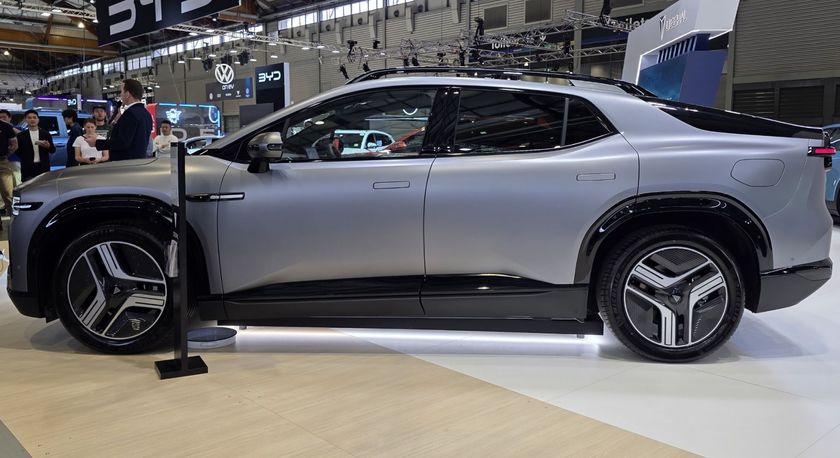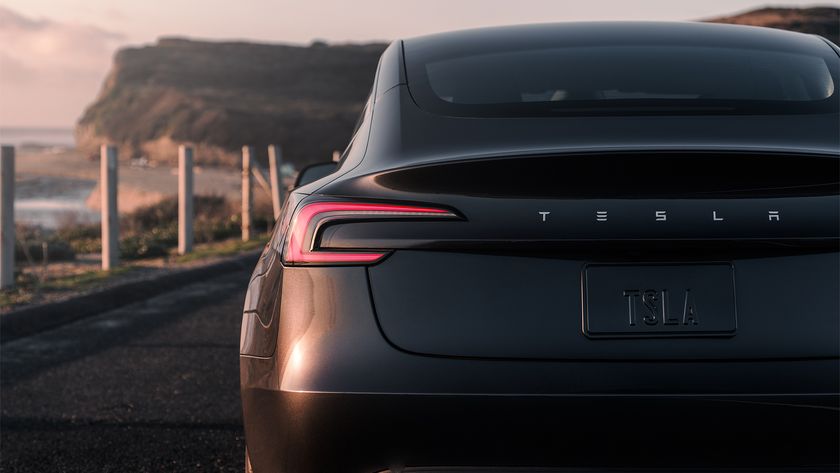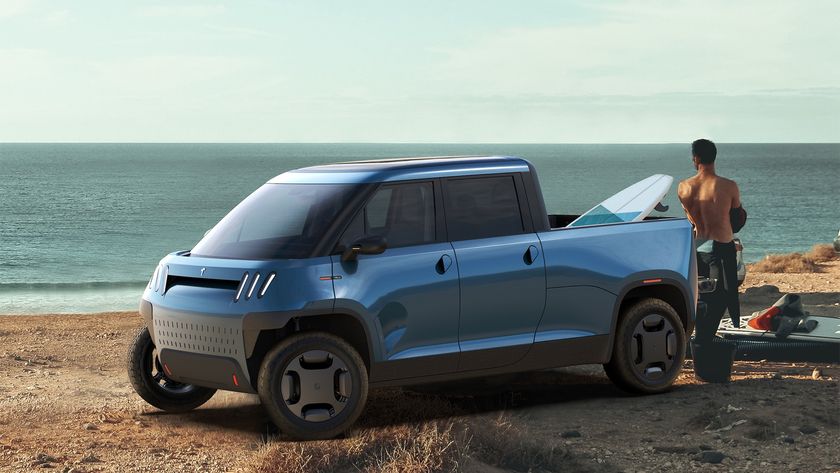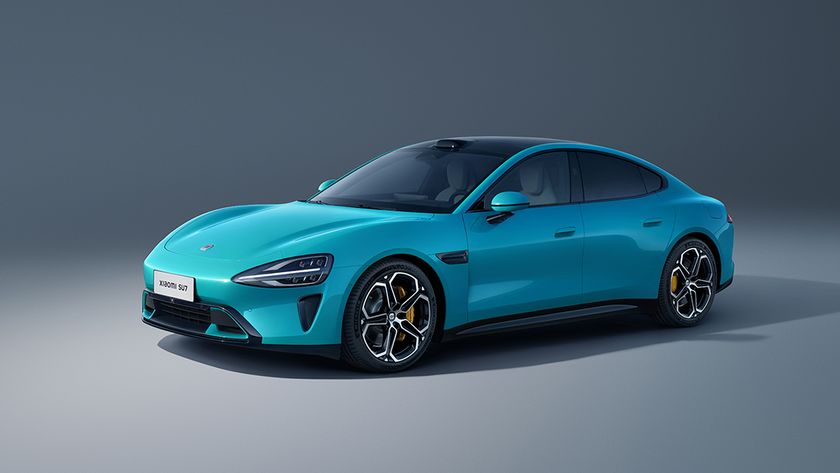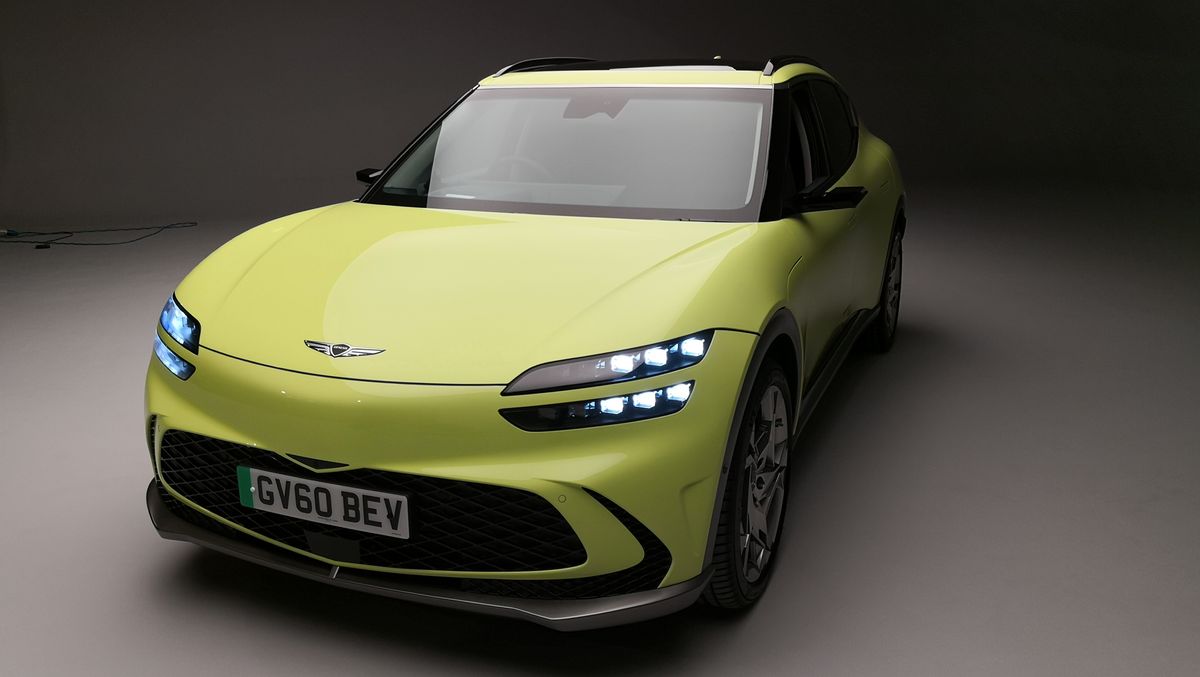
Genesis is the luxury arm of Hyundai and its profile is building nicely in Europe while already being a reasonably well-known brand in the US since its launch back in 2016.
However, up until now it has been without a dedicated EV to shout about, but all that is set to change with this, the brightly coloured Genesis GV60.
TechRadar recently had the chance to see the firm's first electric car up-close, in the decidedly flamboyant Sao Paulo Lime finish you see here, and it's a real looker.
The first thing that strikes you about the Genesis GV60 is it seems larger than expected, a bit like the Hyundai Ioniq 5 in fact. Not too surprising given the GV60 is built on Hyundai's dedicated e-GMP platform, just like the Ioniq and Kia EV6.
It's got the Genesis identity too, with some tell-tale signs that show its part of the range, which includes the GV70, GV80, G70, G80 and G90. Interestingly, the GV60 sits alongside the GV70 and GV80 SUV models on the Genesis website, although from a distance it looks like more of a sedan.
That's probably because the Genesis GV60 is quite deceptive. While it looks bigger in the metal from the outside, especially with its 21-inch alloys, it's not until you peek inside that the EV reveals itself as a surprisingly spacious premium motor.
And, as you'd expect from the South Korean manufacturer, it also comes packed to the hilt with clever and innovative features.
Get daily insight, inspiration and deals in your inbox
Sign up for breaking news, reviews, opinion, top tech deals, and more.
A trio of choices
Our first viewing of the Genesis GV60 took place in a studio in the commuter belt of London, so the EV had a European specification. The Genesis GV60 will be available there with a choice of three different motors, including a 168kW rear-wheel-drive single motor option boasting 350Nm of torque, aimed at users who want long-range capabilities.
There are also two dual motor all-wheel-drive models, the Standard AWD and Performance AWD. The former offers 234kW of combined power, 74kW from the front motor and 160kW from the rear to produce 605Nm of torque.
The latter Performance edition delivers 360kW with 180kW front and rear and a maximum available torque of 700Nm.
The Genesis GV60 sports four doors, has a lifting tailgate/hatchback and can seat five passengers, two in the front and three in the back. The overall dimensions are 451.5 cm (length), 189 cm (width) and 158 cm (height) with a wheelbase of 290 cm and a ground clearance of 160 cm.
The trunk features 432 litres of capacity while at the front there's some additional storage in the shape of 53 litres for the rear-wheel-drive model and 20 litres for the all-wheel-drive edition due to the extra componentry that's packed in.
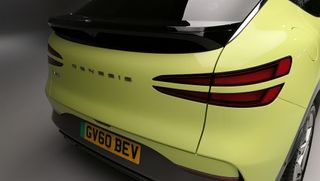
Exterior 'Elegance'
Before we get to the interior, let's take a closer look at the exterior, which is based on the Genesis 'Athletic Elegance' design ethos.
Having seen the Sao Paulo Lime shade in promo shots the color looks even better in real life. It really helps to compliment the curves of the GV60, which is instantly recognizable as a Genesis mainly because of the front end.
This is especially so around the grille area, which follows a theme set on other models in the Genesis portfolio.
Similarly, there's also a common theme with the lights, both front and rear, with headlights and taillights that blend with the curves of the bodywork to great effect. The integral light styling works really well, and also keeps things fairly minimal.
Door handles are recessed when the car is locked and pop out when you want to get in and out. Perhaps unsurprisingly, they look like they might have come from the same department as those found on the Hyundai Ioniq 5.
The door mirrors, or rather cameras, fold in and out automatically and like others using this design are pretty unobtrusive. Nevertheless, they add a neat style flourish as you work your way around the car.
At the back it's fairy minimal too, with recessed lighting along with plain and simple badges. The car we looked at had a glass roof option, which is more noticeable when you get in. Access via the four doors is improved by the height of the GV60 too, which means it's very easy to get in and out of.






Interior wizardry
Most of the really good stuff is on the inside of the Genesis GV60. While the exterior is cool to look at, there are some wonderful design ideas going on once you sit in the driving seat.
The example we looked at was finished in New Navy, which is just that, a subtle shade of blue. There's plenty of space in the front portion of the cockpit thanks to a central console that allows a gap all the way across the floor in much the same way as the Ioniq 5.
One of the first things your eyes land on is the dashboard-mounted screen, which carries both the infotainment system and the digital instrument cluster. Usefully, the display allows you to get the benefit of a larger map view when using the satellite navigation.
Another thing that catches your attention is the bright yellow Boost button that sits underneath the steering wheel, giving another nod towards the performance potential of the GV60.




Drive options are covered by three modes and Sport delivers a neat surprise just as it does in other Genesis vehicles. Select it from the transmission dial and the sides of the driver seat automatically move inwards, gripping you tightly and suggesting performance will follow.
However, the real cool twist in this procedure is the transmission dial itself. Genesis dubs this the Crystal Sphere, an orb-shaped controller that apparently informs you of oncoming driving conditions.
Not having driven the car we can't vouch for how this works in practice, but in a stationary position the Crystal Sphere is a bit of a head-turning novelty.
Initially all you see is a curious crystal ball sitting in the central binnacle. But when you press the power on button the Crystal Sphere rotates backwards to reveal a control dial. Drive, reverse and park modes are selected from here. Complimentary mood lighting also looks to set the interior ambiance to your desired level.
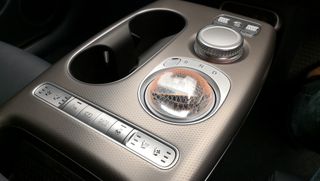
Genesis will have trim packages to choose from in the shape of Innovation and Comfort, though there's also mention of an Outdoor Pack too, which offers up Nappa leather seating as well.
As you'd expect, this will include additional safety and infotainment features. The car we saw benefited from that full glass sunroof (another Outdoor Pack highlight). However, as mentioned earlier, alongside the distinctive silver interior flourishes such as vents and handles the GV60 also packs those digital side mirrors.
Digital side mirrors are a hard thing to judge without driving the car. We've seen them work to good effect on the Honda-e and less so on something like the Audi e-Tron Sportback.
The screens in each of the front doors on the Genesis GV60 look quite sizeable, while the cameras on the outside actually add a touch of flair to the exterior lines. We look forward to trying them out in the not-too-distant future.
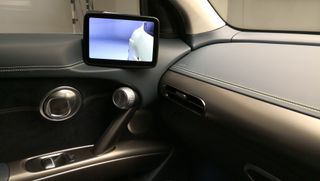
Charging, two ways
Being a premium car with Hyundai thinking behind it the Genesis GV60 packs in plenty of technical wizardry. It was pointed out to us that because this was a pre-production model, some of the forthcoming features such as Face Recognition Technology (which will not be available in Europe anyway) and V2L, or Vehicle to Load weren't available.
V2L allows you to use your EV's power to charge other things, using an adapter, which is also available on Hyundai's Ioniq 5.
Being built on the E-GMP platform also means that the Genesis EV60 will be able to offer owners really practical charging options.
The car features a 400/800 volts multi-rapid charging system, which does just that by boosting the 400V delivered by a charger and ramps it up to 800 volts.
Think 10-80% in around 18 minutes if the car gets access to a 350kW charger if you're lucky enough to find one.
More realistically for most markets, a 50kW charger will take around 73 minutes to do the same, which isn't bad at all. If you're making do with home charging on a standard 230 volt power point then expect a similar rejuice to take around 7 hours 20 minutes.
That's still fine if you've parked up for the night and don’t need to use the car again until the morning.
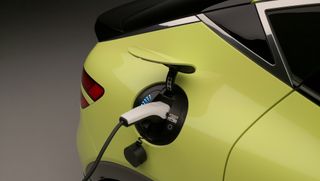
Performance and range
The Genesis GV60 looks like being as interesting to drive as it looks, thanks to plenty of power on tap. Figures on the specification sheet supplied by Genesis state a top speed of 235km/h (around 146mph).
Meanwhile, acceleration should be brisk in the finest EV tradition, with a 0-100 km/h (0-62mph) time stated as 4 seconds. It should be more than able to hold its own against rivals like the Volkswagen ID.4 or the ever-popular Tesla Model 3.
The Genesis GV60 should be good for around 300 miles on a charge from the 77kWh battery car, which is pretty good.
As for pricing, Genesis is yet to announce the cost. Given the premium appeal of the GV60 rumours suggest it could be more than £45,000 (a touch over $60,000), but might even stretch to £80,000 if you're going for the top specification, especially so if you want all of those lovely extras.
Rob Clymo has been a tech journalist for more years than he can actually remember, having started out in the wacky world of print magazines before discovering the power of the internet. Since he's been all-digital he has run the Innovation channel during a few years at Microsoft as well as turning out regular news, reviews, features and other content for the likes of TechRadar, TechRadar Pro, Tom's Guide, Fit&Well, Gizmodo, Shortlist, Automotive Interiors World, Automotive Testing Technology International, Future of Transportation and Electric & Hybrid Vehicle Technology International. In the rare moments he's not working he's usually out and about on one of numerous e-bikes in his collection.
